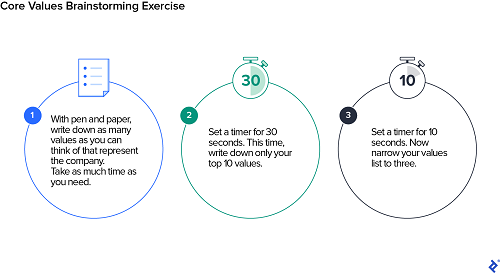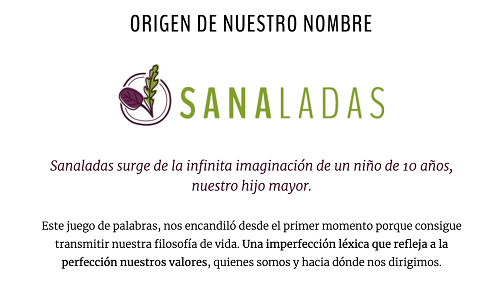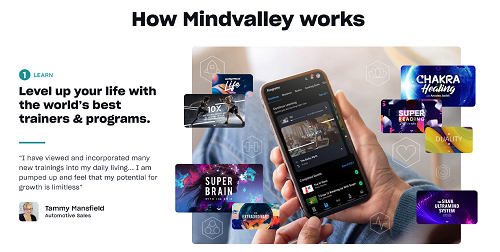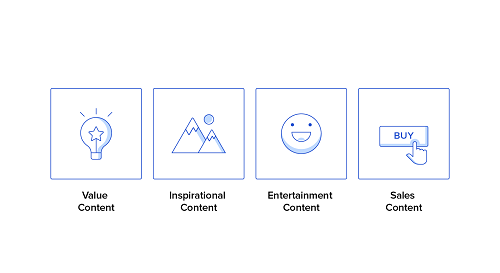For Your Health: 5 Tips and Strategies for Wellness Branding

Pilar Rios Nino —

The health and wellness industry, which includes fitness classes, mindfulness apps, nutritional supplements, and other products and services, is a $1.5 trillion global industry that’s growing by 5% to 10% each year. This creates opportunities for companies to expand and new brands to emerge, but also brings a challenge for leaders and designers: how to differentiate wellness brands in a competitive market.
Each wellness brand I’ve worked with has something distinct to offer, yet many struggle to clearly communicate their values, connect with customers, and understand how their brands are perceived in the marketplace. Because health purchases are personal, establishing brand trust is a prerequisite for success. How can you use brand strategy to foster this trust?
The following five branding practices can help any wellness business connect with customers and stand out from the competition.
1. Define the Brand’s Core Values
Branding is more than a color palette or logo. A company’s mission, vision, and story are all part of the brand. Begin by understanding the core values because they affect all of these elements.
Boldness, humility, and simplicity are examples of core company values. The options are limitless, but I recommend choosing three core values because that’s about as many as people can remember at one time. If your company has more, reducing them will focus and clarify your message. Not sure how to choose? Try this brainstorming exercise.

If possible, do this exercise with pen and paper, since writing by hand may help with self-expression and creativity.
2. Establish a Brand Story
Stories capture attention and help people connect with your brand. I recommend sharing how your company began and how that history informs your dedication to customers today.
One of my clients, Sanaladas, sells healthy salads and wraps in Barcelona. The name came about because the owner’s son combined the Spanish words for healthy (sana) and salad (ensalada). The wordplay reflects the company’s commitment to healthy eating and love for salads, and they incorporate that narrative into their brand story:

Stories usually involve a conflict, so another place to begin your brand story is with the problem your customers are trying to solve. Linking your brand’s offerings to customers’ problems in an authentic way helps them relate to your story. When people see themselves reflected in your communications, they are more likely to feel a connection and make a purchase. As Donald Miller, author of Building a StoryBrand, said, “Don’t tell your story, invite customers into a story in which they can experience a transformation and ultimately have their problem resolved.”
For example, a common problem with healthy eating is that healthful food is sometimes perceived as bland. In the description below, Sanaladas offers customers “a new way of eating healthy” by fusing traditional gastronomy and the latest food trends. Through the brand story, Sanaladas presents a solution to the potential problem of blandness, creating curiosity about these traditional yet trendy foods to encourage people to try them.
3. Make a Promise
It’s easy for people to scroll by a post or close a tab that doesn’t capture their interest. That’s why, in addition to telling the brand story, you need to concisely explain the company’s value proposition.

The wellness brand Mindvalley shares how its service works in three steps, each described in a few words alongside a testimonial and images. This distills an array of offerings into clear impact.
Your audience may not be experts in health and wellness, so it’s best not to use jargon or assume prior knowledge. Instead, focus on the problems you aim to solve.
Your succinct message should make it clear who your target audience is and how you plan to help them. For example: “I create delicious, fast, and healthy recipes for people prone to stomach pain,” or “Make fitness fit into your busy schedule with daily, 10-minute exercises.”
4. Create Engaging Content
Creating fresh content is a crucial way to keep customers returning to your site. For digital businesses in Spain, the average conversion rate is 2.32% for returning visitors and 0.74% for new users, according to 2022 research. Consider categorizing content into four types:

Value content
These articles, videos, or podcast episodes answer customers’ questions and address problems they may face. For example, a mindfulness app might publish a blog post about how to fit meditation into a busy day. To determine which issues are critical to your customers, send them surveys, read social media comments, and research search-engine keywords.
Inspirational content
“Inspo” is usually posted on social media and may include imagery, quotes, or testimonials. These motivational posts are a great place to reinforce core values and build trust in a company. When followers share these posts with their networks, brand visibility increases.
Entertainment Content
Offer followers a behind-the-scenes look at your brand with fun snapshots. It doesn’t need to be funny—although that helps (as long as it’s consistent with your brand values). You could post a photo of the view from your workspace or share what your team does. For example, Embody Health London shares content on TikTok that is both entertaining and educational.
Sales Content
This is where the more traditional marketing of your products and services happens. It might include success stories, or announcements of new features or discounts. Sales content should account for no more than 15% to 20% of your output. The key is balance. Don’t overwhelm potential customers with too much sales content or focus only on entertainment. Monitor engagement and sales to find out which types of content resonate with your audience.
Most people won’t see (or remember) all your communications. Even if a message feels repetitive to you, it probably won’t to your audience. You can also change the format and share similar content across different channels. If a video is getting a lot of views, turn the key insights from it into a carousel on Instagram, for example, or make it into a downloadable guide to obtain new leads. Repeating messages at various times and in different formats keeps your brand top-of-mind.
5. Inspire Action
The purpose of connecting with people through branding is, ultimately, to encourage them to try your product. Make it easy for potential customers to take action.
With each communication you create, think about your objective. Do you want to attract social media followers? Encourage people to subscribe to emails? Sign up for a yoga class? Don’t make the customer guess: Include a clear call to action and steps that are simple to follow.
For example, if you are creating a story about your product or service on Instagram, direct users to click a link in your bio, and tell them what they’ll get when they do. (“Click the link in our bio for 20% off your first class.”) On your website, avoid using buttons with vague text like “Read more” or “More info.” Instead, opt for clear, actionable verbs like “Sign up,” “Try,” or “Buy now.”
A Foundation to Build On
Reinforce your core values, brand story, and value proposition with your team, as well as your customers. Print the results of your branding work and post them in your workspace, or save them to a visible place on a shared drive. Regularly returning to these reminders will give your content clear objectives that align with your brand.
As the health and wellness industry continues to grow, taking these five steps can help a brand foster a connection with consumers and stand out in a crowded market. Of course, there is more to wellness branding and brand strategy. These initial steps create a foundation on which to build as a brand develops, expands, and continues to support its customers’ health and well-being.
ABOUT THE AUTHOR
Pilar has been working as a designer since 2012. She has experience working with companies to improve the visual communication of their brands and strengthen relationships with their clients. She specializes in UI/UX design, digital illustration, and brand strategy. Pilar loves to apply creativity to any format in a meaningful way. Her industry experience is backed by a postgraduate degree in UI/UX design, a bachelor’s degree in advertising and public relations, and another in fine arts.
For further reading- www.toptal.com/designers/brand/wellness-branding














